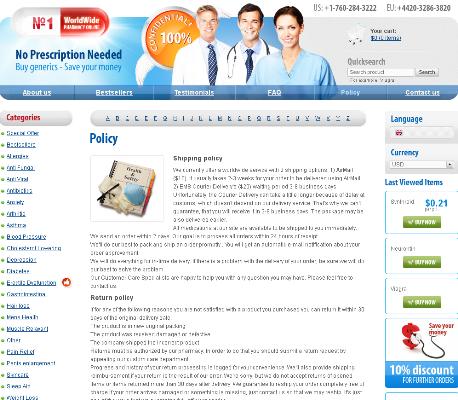The Benefits and Risks of Taking Glucophage
Understanding What Glucophage Is and How It Works
Glucophage, known generically as metformin, is a widely prescribed medication often seen on the top 200 list of essential drugs for diabetes management. It primarily targets the liver, reducing glucose production, while simultaneously enhancing insulin sensitivity. For those receiving this "script," it's a critical tool to manage blood sugar levels efficiently.
Mechanistically, Glucophage decreases the amount of sugar your liver releases into the blood and increases the muscle's absorption of glucose. Imagine the body as a "pharm land" where Glucophage coaches individual organs to perform better in glucose management. This dual action makes it a cornerstone in diabetes care.
However, simply taking Glucophage isn't enough. Following "Sig" instructions precisely is crucial for optimal results and minimizing side effects. Adherence to dosage and timing, as well as regular monitoring, can significantly enhance the medication's effectiveness. Always ensure to obtain the hard copy of your prescription for future reference.
| Term | Definition |
|---|---|
| Script | Prescription |
| Sig | Directions on a prescription |
| Pharm Land | The pharmacy department or area |
Key Benefits of Glucophage for Diabetes Management

Glucophage, known generically as metformin, is a staple in diabetes management. It notably improves the body's sensitivity to insulin, making it easier to regulate blood sugar levels. This not only helps in stabilizing glucose levels but also reduces the risk of long-term complications associated with diabetes. Many patients rely on this elixir for its dual role in controlling blood sugar and aiding weight loss, a crucial factor for those battling type 2 diabetes.
Furthermore, Glucophage possesses cardiovascular benefits, offering protection against heart disease, a common comorbidity in diabetic patients. By enhancing insulin sensitivity, it assists in lowering cholesterol and triglyceride levels. However, it’s paramount to follow the Sig as indicated by a healthcare professional to maximize these benefits while minimizing risks.
Integrating Glucophage with a healthy diet and regular exercise leads to optimized diabetes control. This script works best in tandem with lifestyle modifications, enhancing its efficacy and enabling better overall health. Many find that their need for other medications diminishes when they combine Glucophage with these lifestyle changes, showcasing its potential as a cornerstone in effective diabetes management.
Potential Side Effects of Taking Glucophage
When taking Glucophage, some individuals might experience gastrointestinal issues like nausea, diarrhea, and abdominal discomfort. These side effects often occur at the beginning of the treatment and may subside over time. A more serious but rare side effect includes lactic acidosis, a buildup of lactic acid in the blood, which requires immediate medical attention. It’s crucial to follow the Sig provided by your healthcare provider to minimize risks. Monitoring your body’s response to Glucophage can help prevent potential complications.
Who Should Avoid Using Glucophage and Why

Individuals with severe renal impairment should steer clear of Glucophage. Due to the drug’s potential to cause lactic acidosis, a dangerous buildup of lactic acid in the blood, the kidneys' ability to properly excrete it is crucial. Those with impaired hepatic function should also avoid this medication, as liver dysfunction further increases the risk of lactic acidosis, signifying a red flag for these patients. Furthermore, patients with a history of heart failure or respiratory difficulties are advised against its use. The nature of these conditions might exacerbate Glucophage’s side effects, creating additional health hazards. Consulting your White Coat for personalized advice is essential.
Important Dosage and Usage Guidelines for Safety
When taking Glucophage, it’s crucial to adhere to the script provided by your healthcare provider. Proper dosage ensures maximum efficacy while minimizing risks. The typical starting dose is often tailored to the patient's needs and could be adjusted over time depending on blood sugar response. Avoid the "Pharm Party" mentality when it comes to prescription meds; never share or use someone else's prescription, as this could lead to significant health issues or adverse drug interactions.
Remember to follow the sig on your prescription closely, taking the medication with meals to reduce gastrointestinal discomfort. Stay up-to-date with your medical appointments for ongoing evaluation, and avoid "dumping" doses if you've missed any; always consult your healthcare provider on what steps to take in such cases. Combining medication with a proper diet and exercise regimen enhances its effectiveness and promotes overall wellbeing. Below is a quick reference for recommended Glucophage dosages based on various factors:
| Factor | Recommended Dosage |
|---|---|
| Starting Dose | 500mg twice daily |
| Maximum Dose | 2000-2550mg per day |
| Adjustment Period | Every 1-2 weeks as needed |
| Special Considerations | Consult healthcare provider |
Combining Glucophage with Diet and Exercise for Best Results
Pairing Glucophage with a balanced diet and regular exercise can significantly enhance its effectiveness in managing blood sugar levels. Incorporating dietary changes, like increased fiber intake and reduced sugar consumption, helps optimize the compound medication’s performance. Regular physical activity, such as walking or cardio, works in tandem with Glucophage, promoting more stable glucose levels and improved overall health. Always follow the sig provided by your healthcare provider, and consult them before making any significant lifestyle changes to ensure safety and efficacy.



